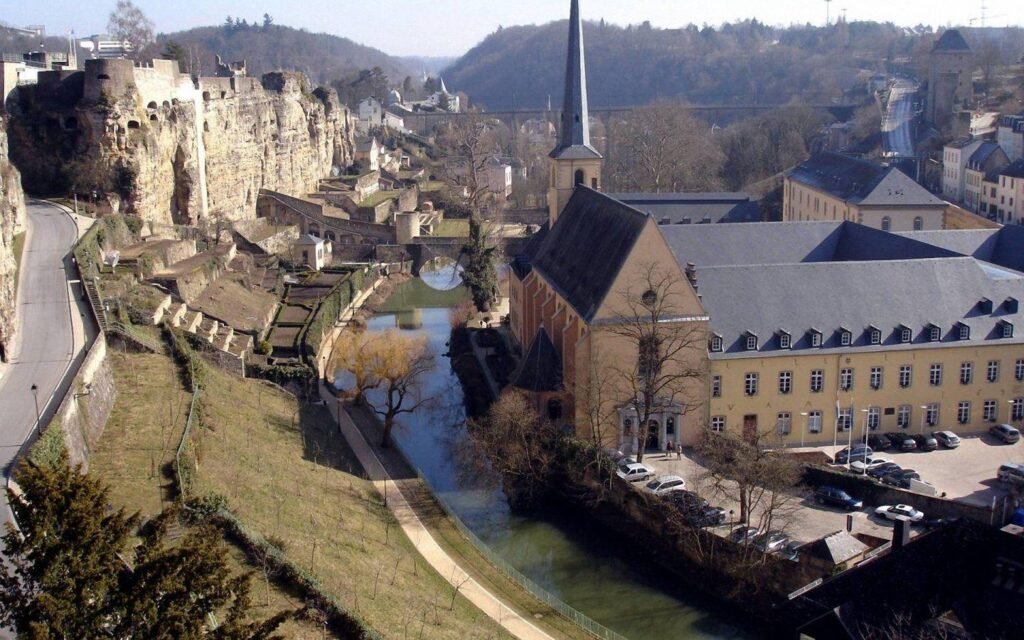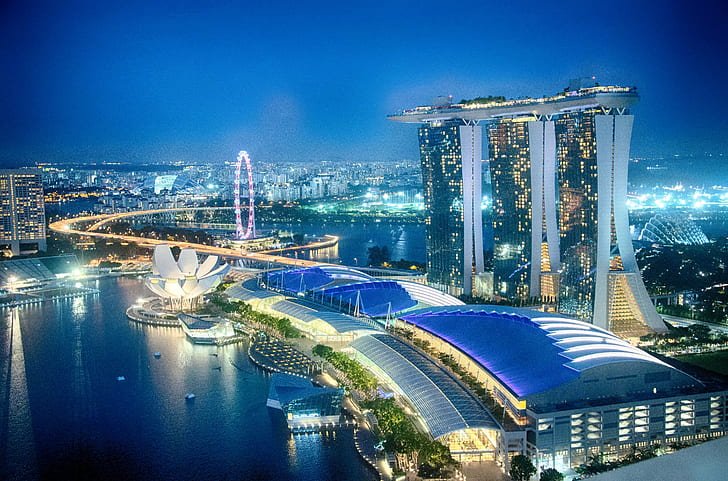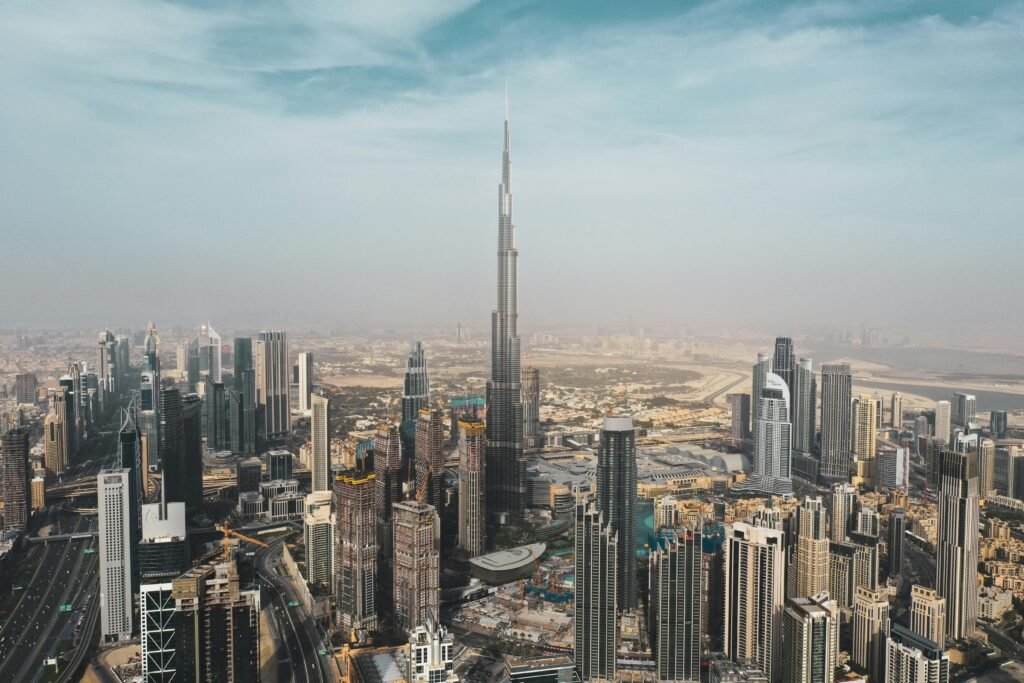Every nation on this list has earned its place among the richest nations in the world by its prowess in manufacturing, access to free markets, or status as a tax haven. We rank the financial standing of each nation using a variety of economic measures, including GDP, GDP per capita at Purchasing Power Parity (PPP), and GNI.
GDP per capita (PPP) is especially helpful since it balances income levels with local cost of living, enabling more accurate comparisons across countries. From tiny island nations to landlocked European countries, we can confidently identify the top 15 countries in the world economy using the most recent data from the International Monetary Fund (IMF).
The World’s Ten Richest Nations
List of nations ranked by purchasing power parity (PPP) and GDP per capita:
- Luxembourg: $143,303.60
- Ireland: $137,638.16
- Singapore: $133,107.62
- Qatar: $114,210.45
- Switzerland: $89,537.32
- United Arab Emirates: $88,961.77
- San Marino: $84,135.42
- Norway: $82,236.12
- United States: $80,412.41
- Denmark: $74,957.66
When disparities in living standards and purchasing power are taken into account, these numbers show the relative economic prosperity of the various countries.”
- Luxembourg: $143,303

Luxembourg’s capital city is Luxembourg City.
Number of people: 661,700; GNI per person: $88,190
GDP overall: $89.10 billion
Luxembourg is the richest nation in the world because of its diverse economy, central European location, and financiWith more than 100 institutions and a sizable sum of money, it is a major player in the global banking market. rket. rket. rket. rket. rket. rket. money. money. money. money. t of money. With almost €4.6 trillion under management, it’s also the second-biggest location for investment fund management. With great wisdom, Luxembourg has expanded its economy beyond banking to include technology, data-driven businesses, and investment fund management, all of which have drawn significant capital inflows.

The Luxembourg Parliament is in Luxembourg City
Luxembourg moved away from its ageing iron and steel sector and towards more creative, modern industries in the 1970s. This action demonstrates the nation’s flexibility and attention to market developments. Furthermore, foreign workers make up almost half of Luxembourg’s labour force, which raises average pay and promotes prosperity. This achievement has been attributed to stable governance, excellent living standards, and prudent expenditures in infrastructure, such as buildings and transportation.
2. Ireland: $137,638

Ireland’s Dublin, An evening view of Dublin, Ireland’s well-known lit Ha Penny Bridge at dusk
5,203,000 people live there; GNI per person is $76,110.
GDP overall: $589.57 billion
Ireland’s ascent to economic prominence—it currently sits just below Luxembourg—is ascribed to a number of factors, chief among them being its corporate tax rate of 12.5%, which is among the lowest globally. Multinational corporations like Google and Apple have chosen Ireland as their European base due to this tax regime and the country’s highly skilled and English-speaking workforce, which has significantly boosted the country’s economy. Ireland has become wealthier as a result of its pro-globalization economic policies, which have further promoted foreign direct investment (FDI). Ireland’s physical location as the dividing line between North America and Europe has also been essential in making it a major hub for logistics and enhancing its economic power.
3.Singapore – $133,107

Singapore City from above during a bright day
5,827,000 people live there; GNI per person is $64,010.
GDP overall: $497.35 billion
Singapore’s strategic positioning as a worldwide financial services hub with essential businesses in manufacturing, transportation, engineering, logistics, electronics, biotechnology, and chemical production has allowed it to thrive despite having limited natural resources. The nation’s upscale infrastructure, which attracts both foreign and local investment, contributes to its financial success even more. Additionally, the progressive government adds to the nation’s wealth by implementing a number of investor-friendly policies that draw people and businesses from throughout the globe.
4. Qatar : $114,210

Photo of West bay Qatar in corniche area
3,210,000 people live there; GNI per person is $62,310.
GDP overall: $235.50 billion
Since breaking away from Britain in 1971, Qatar—which is well-known throughout the Middle East for hosting the FIFA World Cup 2022—has made significant progress. Through its vitally significant natural gas exports, the nation has grown abundantly wealthy from its modest beginnings as a small fishing business. But since 1997, exports have skyrocketed, directly contributing to Qatar’s GDP and positioning it as one of the richest nations in the world. Qatar’s enormous oil reserves are the main source of the country’s GDP growth. They have also made large investments in financial institutions and internet firms.
Switzerland ($89,537.00)
5. Switzerland: $89,537

Switzerland’s Basel. On the Rhine, an old town with the Munster Cathedral made of red stone
8,864,000 people live there; GNI per person is $90,600.
GDP as a whole: $905.68 billion
Switzerland is a wealthy nation whose citizens are happy, earning them a spot among the nations with the best quality of life. Although many people may find its higher cost of living exorbitant, the country’s favourable tax laws have drawn in international investment from around the globe. Switzerland’s GDP shows this inflow of foreign capital, with exports playing a major role in the country’s economic well-being. Furthermore, the hardworking Swiss are well known for their exquisite goods and crafts, which include cheese, chocolate, jewellery, furniture, and much more, all of which are expertly crafted from materials that are found in their own country.

With no capital gains tax, a low-value product tax of 7.7%, and income taxes that are lower than average, Switzerland’s economy is currently among the most alluring in Europe. Due to these three advantages, both foreign investors and Swiss nationals are encouraged to invest in the country’s economy, while locals prefer to purchase items made in Switzerland. Switzerland has had consistent growth year after year due to the strong commitment of its investors, creating an investment climate that has caught the attention of other countries.
6. United Arab Emirates: $68,961

The UAE’s Dubai skyline
9,264,000 people live there; GNI per person is $41,770.
GDP overall: $509.18 billion
The economy of the United Arab Emirates is expanding quickly, making it a dynamic nation. Its capital, Abu Dhabi, is well-known for the opulent lifestyles of its citizens and has grown to be a major global hub for commerce and tourism. E7. Sanith these revenue streams, oil production accounts for a large portion of the UAE’s wealth. Nonetheless, the government has made great efforts to diversify its revenue streams, especially in the fields of technology and renewable energy, and it has made large investments in the expansion of infrastructure. Its continued emphasis on innovation and advancement will undoubtedly contribute to the nation’s continued prosperity in the years to come.
7.San Marino: $84,135

View from the observation deck of San Marino City
33,900 people live there; GNI per person is $41,450.
GDP as a whole: $2 billion
San Marino is renowned for having remarkable financial stability, and it is deserving of its ranking among the richest nations in the world. Part of the reason for this praise is because San Marino exports high-quality goods, which helps the country have one of the lowest rates of poverty on the planet. Furthermore, because of its gorgeous scenery and pleasant Mediterranean climate, tourism accounts for more than half of San Marino’s GDP. As such, it is a monument to exquisite Italian craftsmanship and refined hospitality, but it also serves as an illustration of how harmony and balance may lead to financial success.
8. Norway: $82,236

An aerial picture of Norway’s capital, Oslo
5,526,000 people live there; GNI per person is $83,880.
GDP overall: $546.77 billion
Norway boasts one of the highest GDP per capita (PPP) figures in the world, at $82,236. Norway’s abundant natural resources, its exports of raw oil and gas, its unique social security system, and its universal health care system are the main drivers of this high standard of living. Since the 1970s, it has been harvesting its rich petroleum reserves and enhancing them with freshwater, minerals, timber, fish, hydropower, and natural gas. Despite the rising cost of living, wages are also still high.
9. The United States: $80,412.

A sunset view of the Financial District of New York City
339,277,000 people live there; GNI per person is $70,930.
GDP as a whole: $26.94 trillion
The United States of America is widely acknowledged as a wealthy nation. Its vast and varied economy generates goods and services that are in high demand by global consumers. Natural resources like oil and gas, as well as highly developed sectors like computer technology, engineering, and biotechnology, power this economic engine. Roads, bridges, ports, airports, and trains are examples of infrastructure that benefits the United States as well.
utilities, farming equipment, and telecommunications networks, enabling its people to live comfortably and effectively. Lastly, compared to other regions of the world, the US has a comparatively high degree of political stability, which allows it to uphold domestic order while encouraging foreign investment through sustainable policies. The combination of these factors places the US economy among the most remarkable in the world.
10. Denmark: $74,957

On a bright summer’s day, the famous ancient Nyhavn harbour in Copenhagen, Denmark, is visible.
GNI per capita: $68,300; population: 5,986,000
GDP overall: $420.80 billion
Denmark is a wealthy, small nation in Northern Europe. Its high-tech manufacturing and service sectors, which account for the majority of GDP, power its robust economy. The nation also benefits from its advanced infrastructure, which includes dependable, reasonably priced, and highly efficient transportation networks. Denmark has very high living standards.
has been made feasible by prudent budgetary policies, which have allowed the nation to sustain high growth and low unemployment rates. Furthermore, all Danes are entitled to free healthcare, education, and other facilities like creche, thanks to the country’s comprehensive welfare system, which supports strong families. It also promotes investment in companies and innovation since it provides entrepreneurs with simple access to finance and financial support. Denmark’s strong economy and progressive social policies, which greatly benefit all of its residents, have made it one of the world’s most prosperous nations overall.
